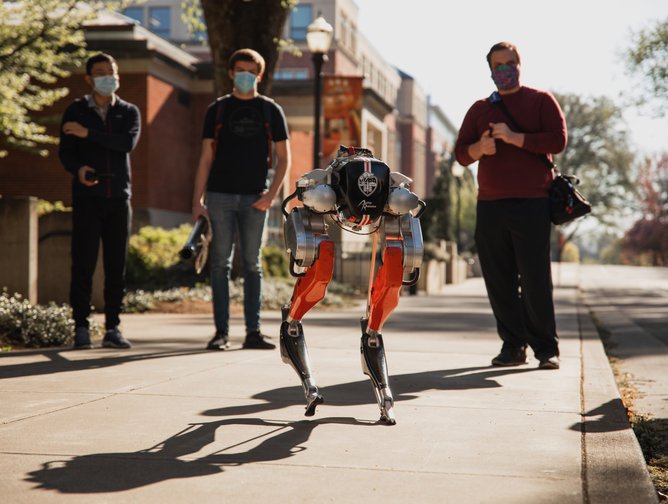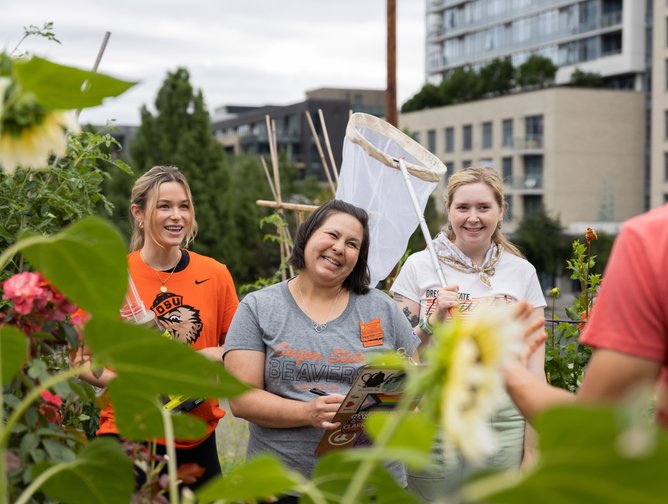
Andrea Ballinger
Vice Provost & Chief Information Officer at Oregon State University

In her role as Vice Provost and Chief Information Officer (VP/CIO) for University Information and Technology (UIT) at Oregon State University (OSU), Andrea Ballinger is responsible for providing enterprise IT services and university-wide IT infrastructures.
Aligning IT strategy with the university’s needs and strategic goals, Ballinger and her team drive innovation and strive for operational excellence to meet the evolving expectations of students, faculty, researchers and employees.
Rising through the ranks to become a leader in technology, this journey is far from what a young Ballinger would ever have envisaged. As she puts it: “I had absolutely no intention of being in higher ed when I was younger, or even technology for that matter. I wanted to be a pediatrician!”
With her natural strengths in math and science, becoming a pediatrician was Ballinger’s way of combatting the misogynist expectations for what a woman’s career should look like at the time.
She says: “People always used to tell me becoming a pediatrician is not something women do; ‘women should be nurses’, they used to say. I was determined to dispel that stereotype.”
Early career planning doesn’t always pan out as anticipated. When Ballinger realised the work of a pediatrician wouldn’t allow her the level of control she wanted in her working life, she embraced finance and later information and technology.
She explains: “Going to college, I ended up having a finance degree, and later on I did my MBA. My first job in banking was in the 1980s and 1990s, which, at the time, was all about mergers and acquisitions.
“What made the difference between the top financial organisations and the rest was the technology. Those that led had really strong technology at the core of what they were doing, and good data too.”
When giving a presentation on solving the Year 2000 Problem (Y2K), Ballinger had her first higher ed interaction when the University of Illinois recognised the need for her expertise.
“I enjoy working in high-speed environments and, in my mind, higher ed did not meet this criteria,” says Ballinger. “I thought by working in higher ed I would get bored easily, but I realised that overseeing a university is more like overseeing a city, with different businesses inside it, I was in.”
Ballinger: The technological leader with a vast area of interest
One could be forgiven for thinking Ballinger’s role extends only as far as IT in support of the administration and instruction of an educational institution, but this couldn’t be further from the truth. As she tells us, her role is much wider.
“At OSU, we provide the technology for our police department, a student health organisation, a veterinary medical hospital, our internal public works department that supports a community of more than 20,000 people, advanced research programmes – including research ships – and internal banking services – and we have to bring that all together across our IT services and infrastructure,” Ballinger notes.
“Not only do we have internal technological responsibilities, but as a land-grant institution, we are charged by the state to promote the wellness of all 36 counties in Oregon.
“When you have a presence with that much reach, the problems you have to solve are not just localised to OSU, but they’re issues the world is trying to solve.”
Of course, to meet the scale her role demands, Ballinger must oversee not just one, but multiple teams that work in conjunction with a full enterprise architecture in separate domains.
Adhering to the TOGAF framework, Ballinger and her team can effectively move from identifying problems as opportunities and provide solutions that meet the demands of the day.
And it is exactly this – honouring the responsibilities that come with being CIO of OSU – that for Ballinger and her team is one of the biggest challenges.
As she puts it: “Being CIO of a large organisation is not for the faint of heart. As an IT leader, I have to understand the complexities of the business and be an advocate and a good steward of the resources allocated to me.
“Not only do I have to consider the expectations OSU has for a particular resource, but I need to use my experience and know-how to improve efficacy. I don’t just want to be the best of a few, I want us to be the best of the best.
“I want us to push the limits of technology, of innovation and creative thinking. Arrive at a place where we are as inclusive as we can be and as personalised as we can be when it comes to the student, faculty and community experience.”


Click HERE to read the full report
******
Make sure you check out the latest edition of Technology Magazine and also sign up to our global conference series - Tech & AI LIVE 2024
******
Technology Magazine is a BizClik brand
- Dell at 40: A Long-Standing Commitment to Digital InnovationDigital Transformation
- Top 100 Women 2024: Tanja Rueckert, Bosch - No. 6Digital Transformation
- Deloitte: Delivering Cloud ERP for Higher EducationCloud & Cybersecurity
- Deloitte: Delivering Cloud ERP for Higher EducationCloud & Cybersecurity







